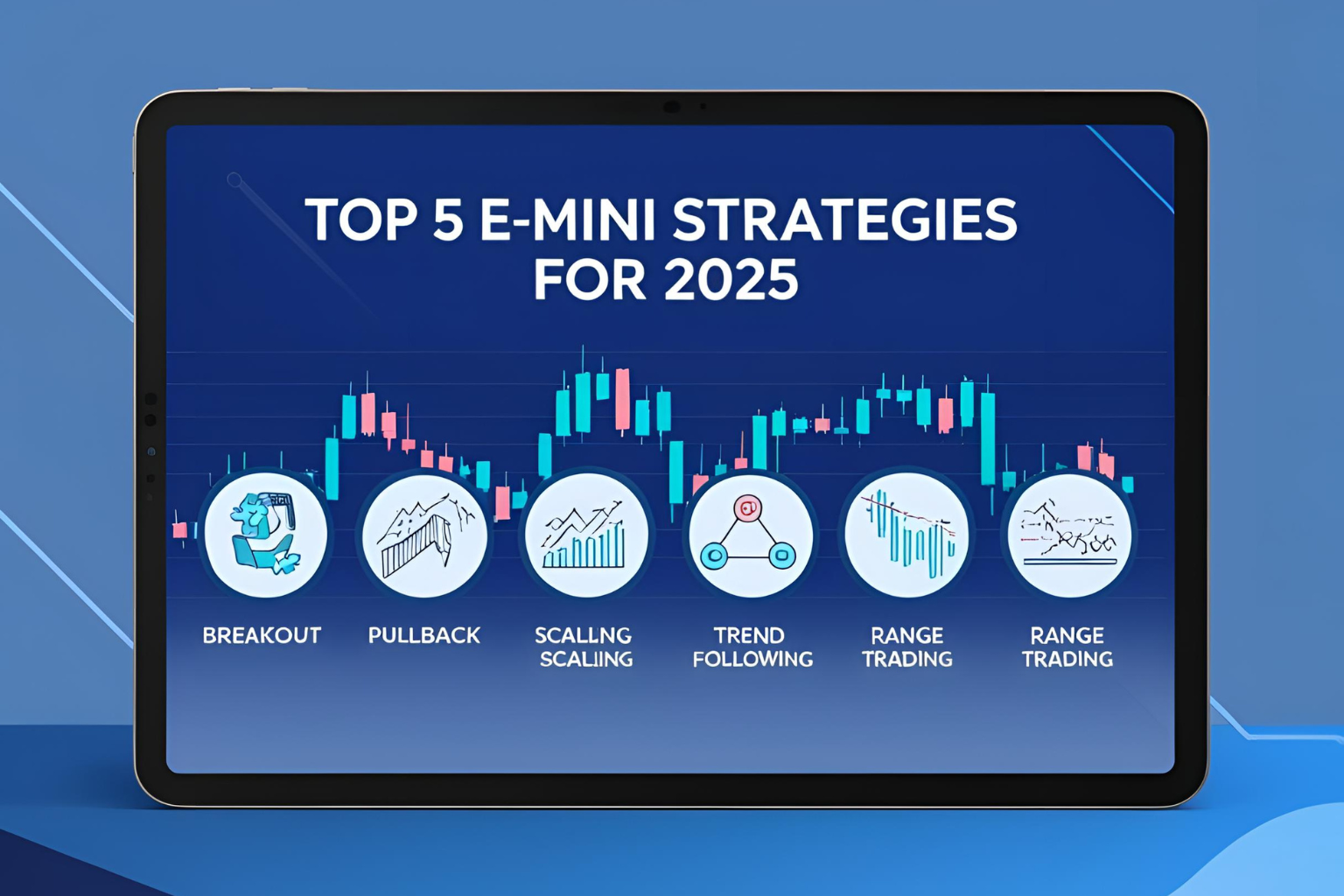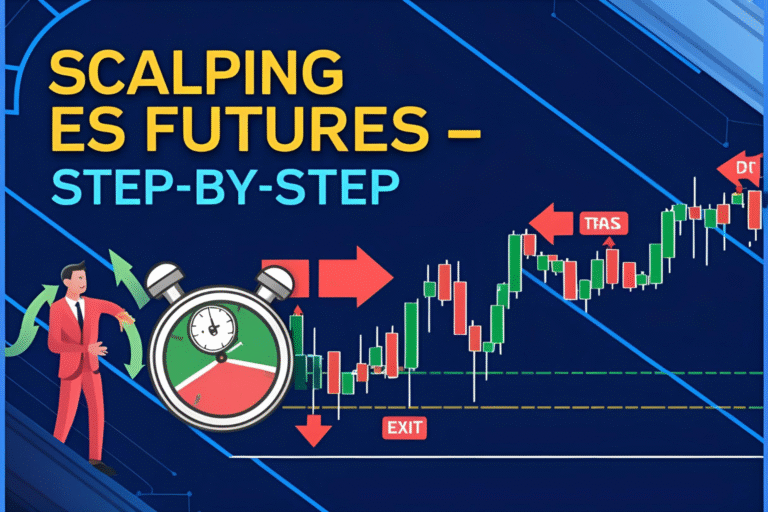Top 5 E-mini Trading Strategies for 2025
Whether you’re trading the E-mini S&P 500 (ES) or E-mini Nasdaq 100 (NQ), having a reliable strategy is essential. With volatility rising and market structure evolving, 2025 offers exciting opportunities for traders using well-tested methods.
Here are 5 E-mini trading strategies that are both beginner-friendly and adaptable to current market conditions.
1. Trend-Following with Moving Averages
Best For: Intraday and swing traders
How It Works:
- Use two exponential moving averages (e.g., 20 EMA and 50 EMA)
- Buy when the 20 EMA crosses above the 50 EMA and price stays above both
- Sell or short when the opposite occurs
Entry Tip: Confirm with RSI or MACD and strong volume before entering a position.
2. VWAP Reversion Strategy
Best For: Day traders and scalpers
How It Works:
- VWAP (Volume Weighted Average Price) acts as a mean price
- Enter trades when price stretches far from VWAP, then shows signs of reverting
Buy Setup: Price moves significantly below VWAP and forms a bullish reversal candle
Sell Setup: Price spikes above VWAP and stalls with bearish divergence
Tip: Use in combination with Bollinger Bands for better precision.
3. Gap Fill Strategy
Best For: Early-session traders
How It Works:
- Trade the common tendency of E-mini futures to “fill the gap” between prior close and current open
- Identify the gap size at market open (9:30 a.m. ET)
- Enter when price starts retracing toward the prior day’s close
Risk Control: Only trade gaps under 1% and avoid news-heavy days.
4. Breakout of Consolidation Zones
Best For: Momentum and trend traders
How It Works:
- Identify tight price consolidation or flags on the 5–15 minute chart
- Enter on breakout with volume confirmation
Buy Trigger: Break above range with bullish candles and increased volume
Sell Trigger: Break below range on bearish momentum
Add-On: Use ATR to set realistic price targets.
5. Mean Reversion Using RSI Divergence
Best For: Short-term countertrend trades
How It Works:
- Look for divergence between price and RSI
- Enter when price makes a new high/low but RSI doesn’t confirm
Setup: On a 15-min or 1-hour chart, spot divergence at major support/resistance
Stop-Loss: Just outside the recent swing
Best Time: During range-bound sessions or post-news spikes
Strategy Comparison Table
| Strategy | Timeframe | Risk Level | Tools Used |
|---|---|---|---|
| Moving Average Trend | 15m–1h | Medium | EMA 20/50, MACD |
| VWAP Reversion | 5m–15m | Low–Medium | VWAP, Bollinger Bands |
| Gap Fill | Opening hour | Medium | Gap logic, OHLC levels |
| Breakout of Consolidation | 5m–1h | High | Volume, ATR |
| RSI Divergence Reversal | 15m–1h | Medium | RSI, trendlines |
FAQs
Which is the most beginner-friendly E-mini strategy?
Trend-following with EMAs is a solid choice for new traders—it’s simple, visual, and widely used.
How do I know which strategy works best for me?
Backtest them and try in a demo account. Pick one that fits your personality, time availability, and risk tolerance.
Do these strategies work on both ES and NQ?
Yes, but adjust stop sizes and targets. NQ is more volatile than ES.
Can I use these strategies with Micro E-minis?
Absolutely. Micro E-minis are perfect for testing and practicing these methods.
Should I automate these strategies?
Only after you fully understand them manually. Automation comes later for consistency—not shortcuts.



